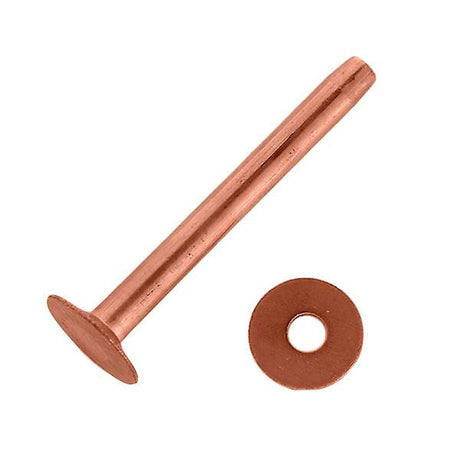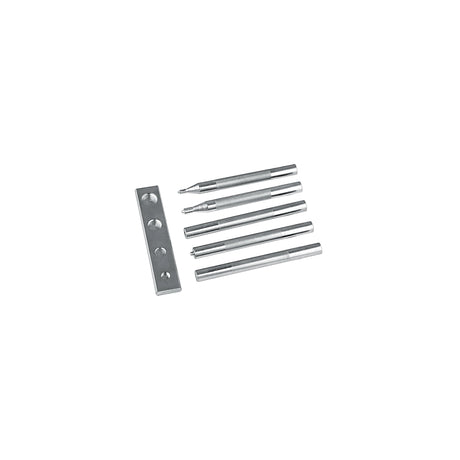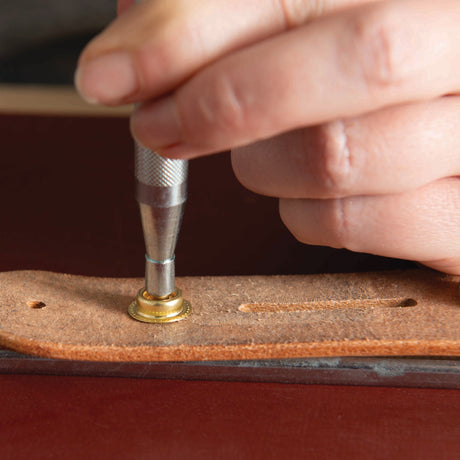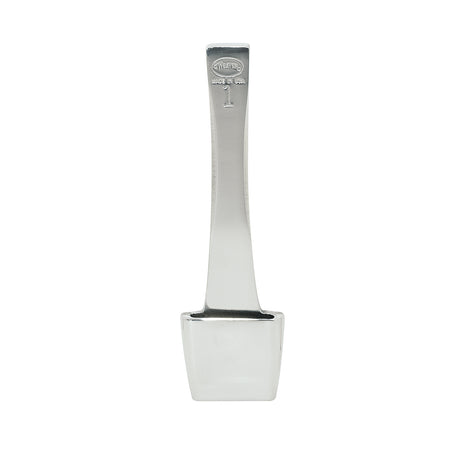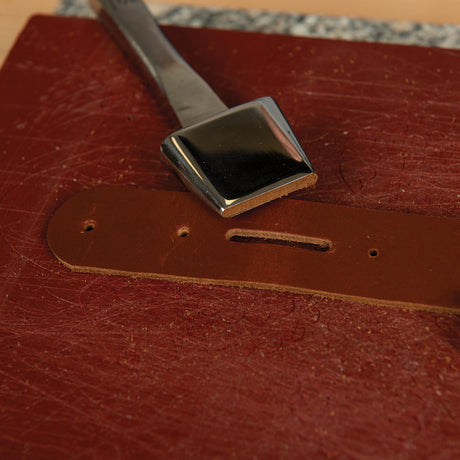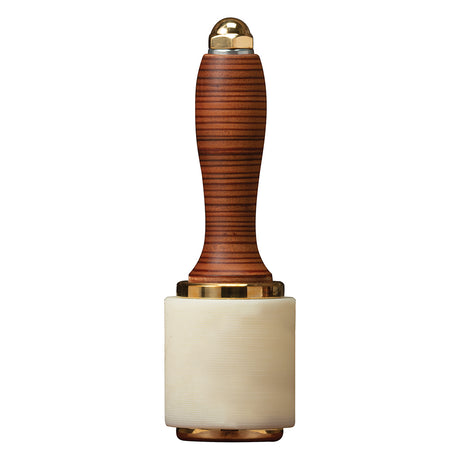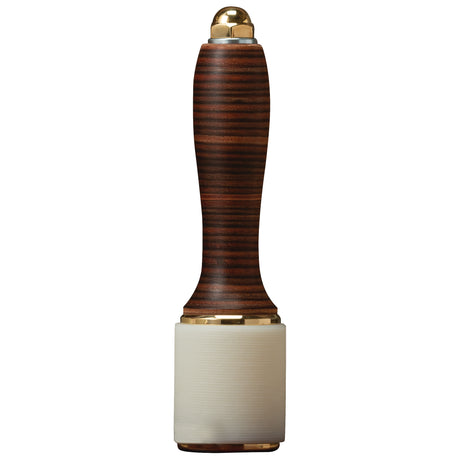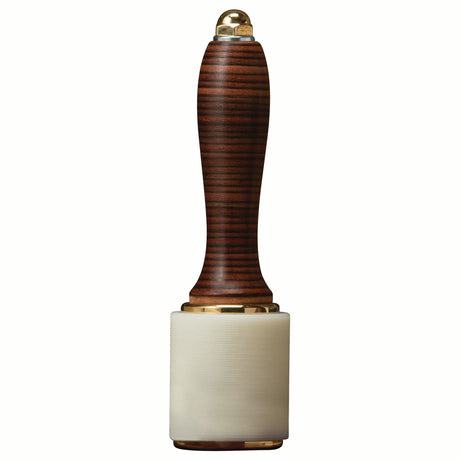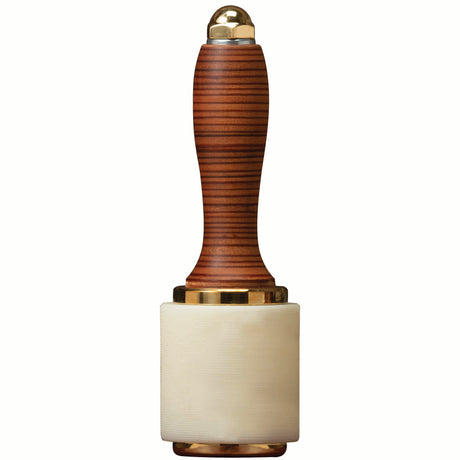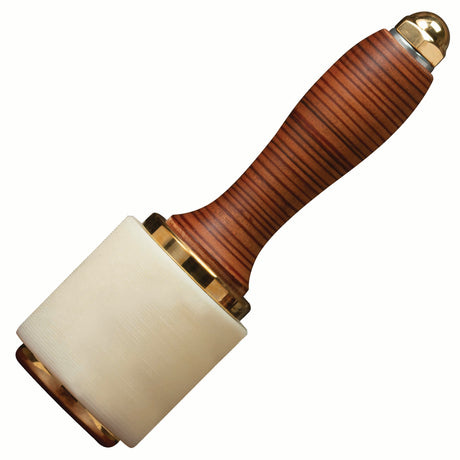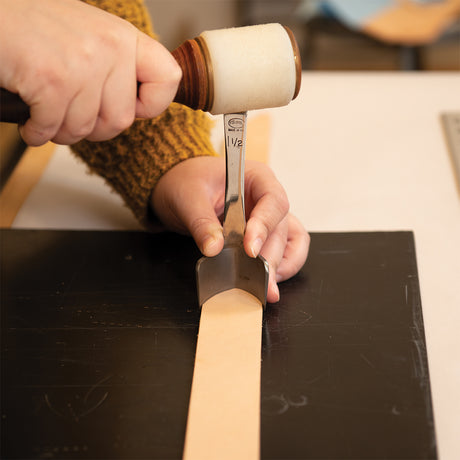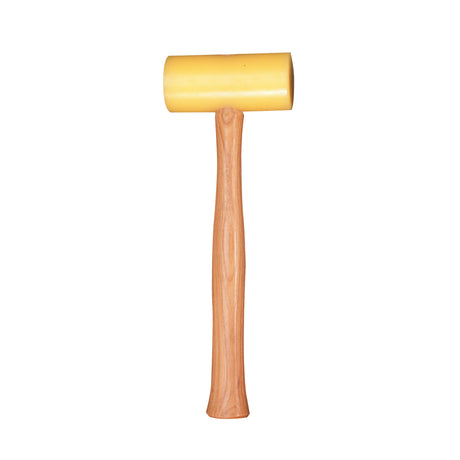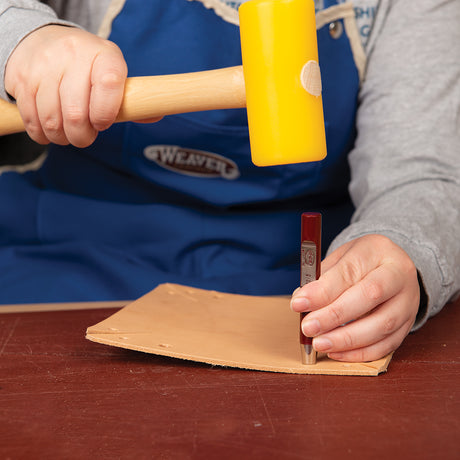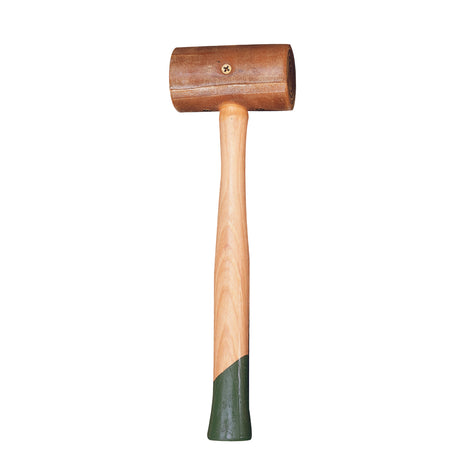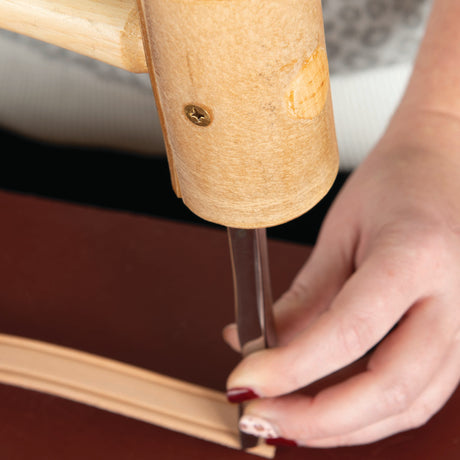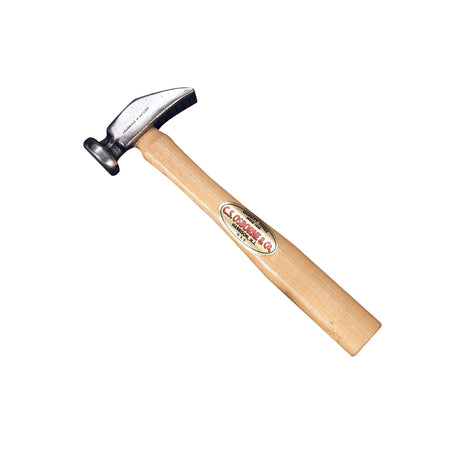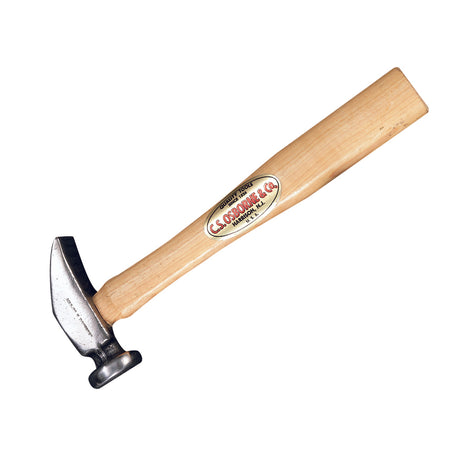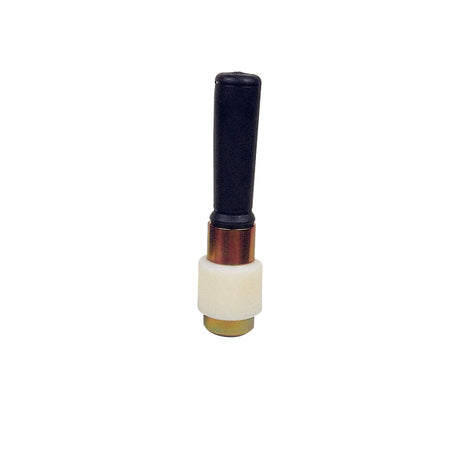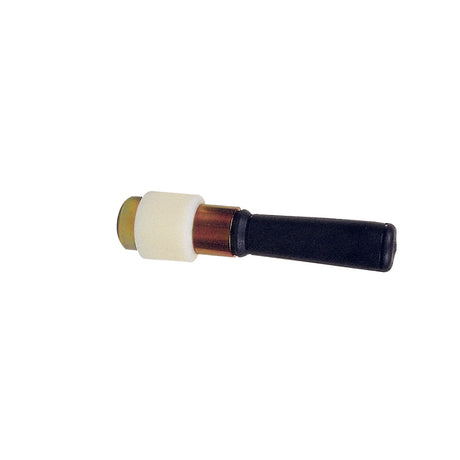A Leatherworker's Guide to Hammers, Mallets, and Mauls

Whether you are a pro-level leatherworker or just starting out in the craft, if you're in the realm of leather tooling and leather stamping, you will be faced with questions on the use of hammers, mallets, and mauls during your leather projects Where should I start? Which is my best option for tooling, stamping, punching, or setting rivets? Which are the most durable?
According to Weaver Leather Supply's resident leathercraft expert Chuck Dorsett, all that really matters in the end is personal preference. However, having knowledge of your options is key to making the best decisions for you, so let's explore by taking a brief journey through the world of hammers, mallets, and mauls!
An Overview of Three Top Leatherworking Tools
1. Hammers

Leatherworkers have a variety of hammers to choose from in today's marketplace. With a rounded face that helps prevent marring of the leather, our favorite Leatherworking Hammer is a handy, versatile tool that's great for sharp folds, forming leather, tapping stitches and lace, adhering cemented parts and “blocking” leather keepers.
While leatherworking hammers are great for a variety of tasks in your workshop, you'll want to advance to a good mallet or maul for leather stamping, leather tooling, and more advanced leatherworking techniques.
2. Mallets
Leather mallets come in different materials and weights to meet your needs. Take a few minutes to explore the options and determine which are top contenders to earn a place on your workbench.
Poly Mallets

Poly mallets (plastic mallets) are the next level up from wooden mallets; they're inexpensive and available in a wide variety of weights and sizes.
- 9 oz. poly mallets are great for setting rivets, stamping and tooling.
- 14 oz. and 19. oz. mallets are also available. While they offer a bit more power, please be aware that they could become heavy for repetitive use on more time-consuming leather projects.
You'll find that durability is the main benefit of plastic mallets. With little or no evidence of wear after extended use, the longevity of a poly mallet makes it a trusted leatherworking tool you'll have on your bench for years.
Discover insider tips on Poly Mallets in our Mallets & Mauls tutorial:
Another widely-used option, with some distinct advantages compared to a poly mallet, is a traditional rawhide mallet.
Rawhide Mallet

Rawhide mallets, though lacking the durability of poly mallets, offer a steadier and more consistent impact on leatherworking tools including: leather stamps, leather punches and rivet setters. Rawhide mallets are popular in 11 oz. and 20 oz. sizes, and the heavier option is better reserved for tasks like setting copper rivets or tubular rivets.
Which mallets have more to offer, plastic mallets or rawhide mallets?
Again, it comes down to personal preference in the end…however, it is good to keep in mind that:
Poly mallets are susceptible to stuttering or double bouncing, especially when striking a tool with a lot of force—in some cases, a tool may even fly off the granite with a hard hit using a plastic mallet.
So, what rawhide mallets lack in durability, they make up for in stability. Also, when rawhide mallets begin to wear down, you can sand down the worn end to replenish years of utility.
In addition, a lighter weight rawhide mallet is a great high-endurance alternative for tasks requiring a bevel.
Pro Tip for Setting a Rivet, Eyelet, Grommet, or Snap :
When setting rivets, eyelets, grommets or snaps, you're looking for moderate weight for some nice control. A mid-weight rawhide mallet offers good, clean punches every time.
Wooden mallets
Wooden mallets are at the very bottom of the totem pole for leatherworking performance. They're cheap, and they lack weight and durability. Unless you only need a mallet for a one-time job as a stop-gap option, you'll want to step up from a wooden mallet.
3. Mauls

For many pro leather toolers, once they start working with leather mauls, they don't go back. There are a few reasons.
- Well balanced- Mauls feel stable in the hand, making it easy to hit the tool soundly and consistently.
- Round face- As opposed to using square-faced mallets, mauls allow more room for error when striking the tool. It's not necessary to hit the tool on the center of the face to use a maul effectively. The circular face also significantly reduces the possibility of deflections.
- Rocking vs. Hitting- Mauls are used with a rocking motion of the wrist, as opposed to the hammer-like hitting motion of a mallet. While it takes some getting used to, using a maul over a long work session takes less energy and puts less stress on the body. For pro leather craftspeople who spend many hours a day tooling, mauls make sense from this standpoint.
Tooling & Stamping
Weight options:
- 16 oz.: good for very delicate tooling, but not as effective for most leather tooling purposes.
- 24 oz.: a solid weight, and highly versatile…the downside is that the heavier weight may cause increased fatigue before a task is finished, which can lead to issues with concentration and poor hits on the tool, making for bad or inconsistent leather stamping.
Leather Punching
For striking a leather punch with power and accuracy, a 1-1/2 to 2 lb. maul is a good bet for consistent performance.
32 oz.- 48 oz.: these weight classes are reserved for heavy-duty leather punching tasks, involving large oblong punches and strap end punches. One good strike goes right through!
For even more power, you could choose a 3 lb. maul for striking oblong and strap end punches. You'll trade some finesse with brute force with a heavier maul. However, the best part about a giant maul is that even if you don't connect clean and flat on the tool, you're still going to get a good punch every time, and the tool does all the work.
Final Notes
Well, there you have it. We've looked at an assortment of hammers, mallets and mauls and their most appropriate applications. Essentially, they all do the same job, but each is a little more refined to a specific job in your shop.
For a walk-through of specific applications of various mallets and mauls, check out this helpful tutorial from our leathercraft expert Chuck Dorsett:
If you're on a budget and focused on beginner leather projects, like leather keychains, leather mousepads, leather pouches, leather card wallets, leather watchbands or leather earrings, we recommend a rawhide mallet. It's affordable, durable, comfortable in the hand, and will do any job in your shop.















